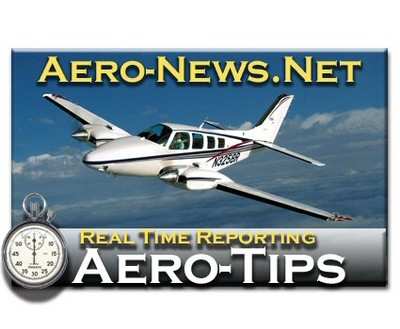Aero-Tips!
A good pilot is always learning -- how many times have you heard
this old standard throughout your flying career? There is no truer
statement in all of flying (well, with the possible exception of
"there are no old, bold pilots.")

Aero-News has called upon the expertise of Thomas P. Turner,
master CFI and all-around-good-guy, to bring our readers -- and us
-- daily tips to improve our skills as aviators. Some of them, you
may have heard before... but for each of us, there will also be
something we might never have considered before, or something that
didn't "stick" the way it should have the first time we memorized
it for the practical test.
Look for our daily Aero-Tips segments, coming each day to you
through the Aero-News Network.
Aero-Tips 12.09.06
Believe it or not, there is a predictability to communications
frequencies for non-towered airports... and even in some cases for
towered airports as well.
Unicom
Unicom is an FCC-licensed service for unofficial, advisory
services at most nontowered airports. There was a time when almost
all Unicom frequencies were 122.8 or 122.7; after a while 123.0 was
added for airports with large flight schools. As communications
radios in general aviation airplanes became the norm, not the
exception, and as pilots tended to fly higher (where their
transmissions covered a wider area), more frequencies were added
and the distinctive use of 123.0 was not observed as strictly.
Currently these are the authorized Unicom frequencies:
- Airports without an operating control
tower:
-
- 122.700
- 122.725
- 122.800
- 122.975
- 123.000
- 123.050
- 123.075
Unicom is also authorized for Fixed Base Operator (FBO) use at
tower-controlled airports. Call this frequency for fuel orders,
arranging rental cars, or general requests to an FBO at a Class D
airport or with a Flight Service Station providing advisories for
the airport:
- Airports with a control tower or FSS on
airport:
-
Multicom
If an airport does not have a licensed Unicom station then
pilots may use the Multicom frequency for traffic advisories and
other general information. Broadcast your pattern position "in the
blind", but don't expect an answer from the ground because chances
are there is no one there (if it was staffed they'd probably have a
Unicom). Here's the frequency:
- MULTICOM FREQUENCY: Activities of a temporary,
seasonal, emergency nature or search and rescue, as well as,
airports with no tower, FSS, or UNICOM.
-
Air-to-air
If you've ever flown with a radio you've heard rampant abuse of
the Unicom and Multicom frequencies by pilots chatting among
themselves. There are actually several FCC-approved frequencies
reserved for air-to-air communications:
- Air-to-air communications & private airports (not
open to the public).
-
- Air-to-air communications (general aviation
helicopters).
-
- Aviation instruction, Glider, Hot Air Balloon (not to
be used for advisory service).
-
Aero-tip of the day: Use the right frequency, Unicom, Multicom
or air-to-air, and know what to expect with each communications
type.
 NTSB Final Report: Cessna 177B
NTSB Final Report: Cessna 177B ANN's Daily Aero-Term (05.08.25): Final Approach Fix
ANN's Daily Aero-Term (05.08.25): Final Approach Fix Aero-News: Quote of the Day (05.08.25)
Aero-News: Quote of the Day (05.08.25) ANN's Daily Aero-Term (05.09.25): Estimated (EST)
ANN's Daily Aero-Term (05.09.25): Estimated (EST) ANN's Daily Aero-Linx (05.09.25)
ANN's Daily Aero-Linx (05.09.25)



